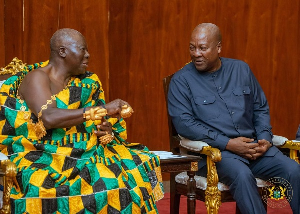By George Sydney Abugri
Unbelievable though it mind sound, it is nonetheless true, that Ghana has inexplicably failed to take economic advantage of the industrial and export potential of an indigenous crop, which has somehow found its way into the United States and other countries, where it is a leading raw material for the manufacture of a wide range of fibre- and paper-based products: Kenaf.
One upon a time, Ghana was a large scale producer of this industrially versatile raw material which is used in the production of newsprint, floor carpets, fiber parts for automobiles, cardboard, sacks and fibre bags used for packaging goods and commodities for export.
The magical, multi-purpose raw material is derived from a plant called “kenaf.” The kenaf plant has a stem with the average circumference of a guinea corn or maize stalk. The plant grows up to six meters and matures for harvesting within three months of planting.
Kenaf grows well on even very poor soils and can be grown almost anywhere in Ghana. Large scale production of the crop has however been limited largely to the Northern, Upper East, Upper West and parts of the Ashanti and Brong-Ahafo regions.
Until the very early 1970’s, Kenaf was grown by small scale farmers in the Northern, Upper East and Upper West Regions along the boundaries of food crops farms to serve as farm boundary fences. There are two species of kenaf. In the Bawku East and West Districts of the Upper East Region, the two species are respectively referred to as “biit” and “bergis.”.
Kenaf leaves and the fleshy covering around its flowers were, and are still consumed as a vegetable.K enaf vegatable forms a nutritious and important part of the rural diet in many parts of Ghana. Kenaf vegetable is cooked with meat or fish into delicious soup or made into “Kenaf balls.” Housewives will find an abundance of kenaf vegetable on sale at the famous Kaneshie Market in Accra and other cities in southern Ghana.
Kenaf is however considered more of an industrial crop. Traditionally, farmers stripped the bark off the kenaf stalk and used the ribbons for the manufacture of ropes for use in the construction of rural houses and for other rural industrial purposes.
The large scale production of kenaf and the discovery of its numerous agricultural and industrial uses, led to the establishment of the Bast Fibre Development Board in 1970.
After its establishment, the now defunct Bast Fibre Development Board embarked on a programme to promote the large scale production of kenaf in the country. One of the strategies involved the provision of research, extension and other support services for the large scale production of the crop by farmers.
A second strategy was the establishment of the Board’s own commercial farms, with the largest of the farms sited at Yirede in the Nkronaza District of the Brong Ahafo Region. Other large and medium scale kenaf farms were established by the BFDB, at Aframso, Tuobodom, Adudwan and Teacher-Krom near Ejura.
In the Ashanti Region, the Board established farms at Mampong, Konongo and Yanchenase. Other kenaf farms were established at Damongo, Zebilla and Tumu in the Northern, Upper East and Upper West Regions respectively.
With a fleet of tractors, haulage trucks, a seed farm and extension staff, the Bast Fibre Development Board was initially able to increase the production of kenaf about three-fold.
The largest consumer of kenaf in the country was the Kumasi Bast Fibre Bag Factory which used the raw material for the production of jute sacks and fiber bags. Most of the kenaf fiber was imported from Bangladesh and Pakistan.
It was confirmed by local experts in 1990s, that the locally produced kenaf fibre supplied to the Kumasi Fibre Bag Factory, was of much higher quality than fiber the factory had been importing from Pakistan and Bangladesh for the manufacture of jute sacks and fiber bags.
With the annual output of kenaf from the Board’s farms supplementing local farmers’ output, there were high hopes of Ghana developing a booming and profitable bast fibre bag industry with great export potential.
This did not happen. While the Kumasi Bast Fibre Bag factory, a subsidiary of the Ghana Industrial Holding Corporation, required about 98, 000 metric tonnes of kenaf fibre for maximum production, the combined production output from local farmers and the board’s own farms, came up to an annual average of about 6,000 metric tones.
After the first decade of operations, many of the Bast Fibre Board’s farm tractors had broken down. Tractors had been relied upon for the seasonal ploughing of kenaf farm lands and the decrease in their number drastically limited the acreage of land ploughed annually for kenaf cultivation.
With many of the BFDB’s haulage trucks also broken down, much of whatever local farmers produced were left on farms for long periods.
Kenaf ribbons stripped off the bark of kenaf plants need to be retted into fibre for the manufacture of bags. The BFDB began a project to construct modern retting tanks at Yapei in the Northern Region for the retting of kenaf into fibre, using water from the Yapei River. Other tanks were built at Aframso to ret ribbons produced in the southern sector.
Out of a total of 100 retting tanks indicated in the Yapei project plan, only 40 were eventually constructed. Most of these stopped functioning after a few years, due to various technical difficulties.
There was yet another setback: While the board employed modern retting techniques for retting ribbons from its farms, local farmers still depended on outmoded and cumbersome traditional ribbon retting techniques.
This involved tying up harvested kenaf stalks into bundles and using large stones to keep the stalks weighted down to the bottom of streams and ponds for several weeks The ribbons were then stripped off and pounded into fibre for sale to the Board.
With most streams and ponds often drying up in the dry season, the traditional methods used for kenaf retting so cumbersome, and the knowledge that the BFDB had no trucks to transport any ribbons they were able to ret, many farmers stopped processing any kenaf they cultivated, into ribbons for retting.
It was gathered from government sources at the time, that some entrepreneurs from the United States had expressed a willingness to engage in the production of kenaf in Ghana on a large scale, on condition that they would be allowed to use all the raw material exclusively for the manufacture of paper products.
The United States entrepreneurs’ expression of interest in the production of kenaf in Ghana, coincided with a research report from the US, which said kenaf fibre produces the highest quality paper for use as newsprint.
A United States Department of Agriculture research report confirmed that newspapers produced from kenaf fiber newsprint, are brighter, tougher, easier to read and far less likely to yellow with time, than newspapers produced with other kinds of newsprint.
Another economic advantage of kenaf over other materials used in the production of paper, according to the research, is that with kenaf, about 90 percent of the original weight of ribbons processed is obtained as fibre, compared with 50 percent in the processing of wood pulp.
Kenaf production and use is now a multi-billion dollar industry in the US. According to the US Department of Agriculture, kenaf is now cultivated on a commercial scale in at least eight states of the US.
The kenaf is used for the manufacture of fibre parts for automobiles, livestock feed, roofing materials, newsprint, burlap, rope, twine, carpets, cardboard, various synthetic fibres and newsprint. More than 20 newspapers across the US use kenaf-based newsprint.
In the meantime, Ghana appears to have forgotten completely about the economic potential of kenaf. During National Farmers Day celebrations no mention is ever made of the crop and no awards handed out for its production. A revamped kenaf industry should be able to produce the raw material needed to revive the Kumasi Fibre Bag factory which has been closed down for many years now.
{The author is Editor-in-Chief of the General Telegraph} Website: www.sydneyabugri.com/Web Email: editing@sydneyabugri.com
Opinions of Wednesday, 15 January 2014
Columnist: Abugri, George Sydney














